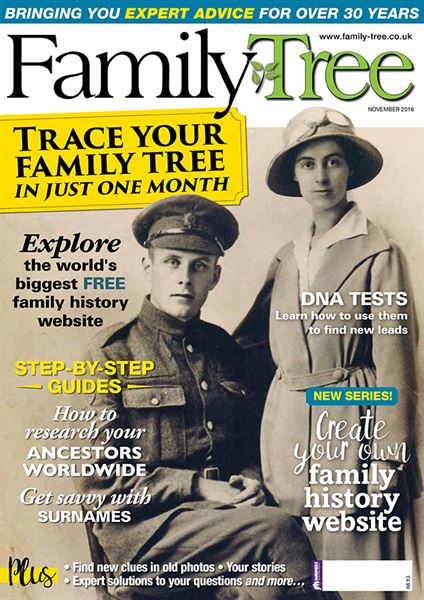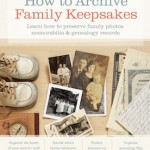 How to organize genealogy research is one of the biggest challenges for family historians at any skill level. Beginners quickly discover they need a system to control the paper and digital chaos, and experienced researchers know that it takes daily vigilance to avoid information overload.
How to organize genealogy research is one of the biggest challenges for family historians at any skill level. Beginners quickly discover they need a system to control the paper and digital chaos, and experienced researchers know that it takes daily vigilance to avoid information overload.
Here’s a sneak-peek at my Step-by-Step Guide “Get Your Records Straight” in Family Tree UK, November 2016, Britain’s longest running family history magazine. Find more strategies in my book How to Archive Family Keepsakes: Learn How to to Preserve Family Photos, Memorabilia and Genealogy Records (Family Tree Books, 2012).
Productive and efficient genealogists have an organized system to handle paper and digital files. They develop good habits for filing information, and reap the benefits of easy access and retrieval.
1. What’s your current filing method? Piles or files?
Decide if your file management program needs to include paper, digital, or both. Most genealogists work with both paper and digital research materials; make life easier for yourself by mirroring file-naming and folder arrangement between paper and digital files.
2. Organize paper files first
A cluttered desk or office is a distraction, even if you subscribe to the “messy desk genius” theory. Gain some visual space by organizing papers to be filed in a basket or bin and set up your paper filing system.
3. Keep your heirloom originals in archival storage
Preserve your family photos, letters, and artifacts in acid-free archival containers stored inside a dark closet or cabinet inside your home.
4. Speedy scanning
Digitize current working paperwork faster with a dedicated sheet-fed scanner. My favorite is the Fujitsu ScanSnap S1300i Mobile Document Scanner that holds 10 sheets and scans both sides of the paper with one pass. For a heavier workload, check out the larger model iX500 ScanSnap Document Scanner.
Learn more tips to control your genealogy research in the November 2016 issue of Family Tree, UK, available in print or digital subscription. Other great articles in this issue include:
“Your 4-week family history research plan” by Mary Evans
“Spotlight on Hastings & Rother” by Rachel Bellerby
“10 essential records for Scottish ancestors” by Chris Paton
“Clocking on: a brief history of factory work” by Adele Emm
“Interpreting 20th-century family photos” by Jayne Shrimpton
“Design your own family history website” by Mike Gould
Note: Thank you for using Amazon Affiliate Links to support The Family Curator.







[…] Organize Your Genealogy Files by Denise Levenick at the Family Curator […]